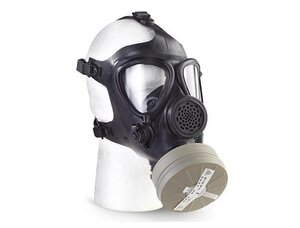A device that protects the eyes, respiratory organs, and face from harmful impurities in the atmosphere in the form of vapors or gases is known as a gas mask. Gas masks are classified by their method of protection as filtering masks, whose action is based on decontamination or filtration of harmful impurities from the air-inspired, and oxygen masks.
Filtration gas masks were multilayered gauze bandages that were soaked in special solutions to protect against chlorine and phosgene. They were first developed during World War I. However, they weren’t effective against other toxic substances. As the technology evolved, gas masks were designed with more improvised filter systems. Now, you can find various types of gas masks ranging from military-grade, nato, M 15 to a completefamily gas mask kit on https://www.gasmaskpro.com/gas-masks.

A Russian chemist created the first dry filtering gas mask using activated charcoal and a rubber face.This gas mask was adopted by both the Allies and Russia in 1916. In other countries’ armies, dry gas masks were soon available. The modern filtering gas mask is composed of a canister and a facepiece (helmet) as well as a pouch. The canister is opened when the mask is instilled.
Contaminated air enters the canister. The aerosol filter removes aerosols, while the chemical absorber (chemical absorber), of activated charcoal, removes vapors and gas. The connecting tube beneath the mask allows the air to pass through. The mask consists of a rubber helmet, goggles, and a valve unit. In the winter, insulating packing is mounted on the eyepiece rings of the helmet mask.